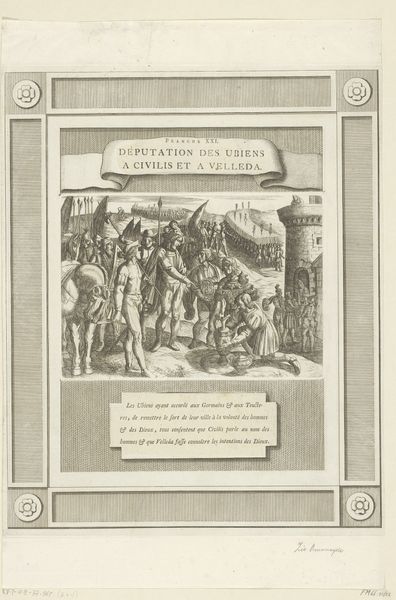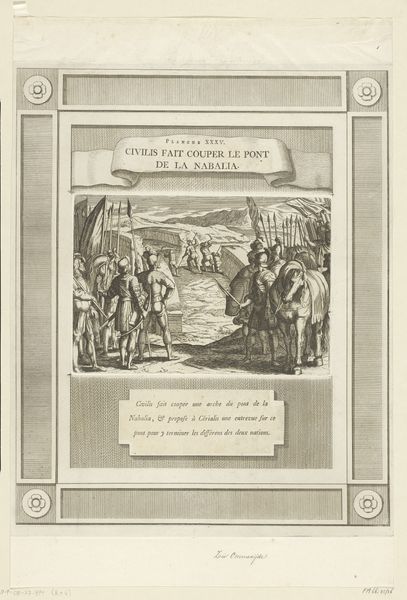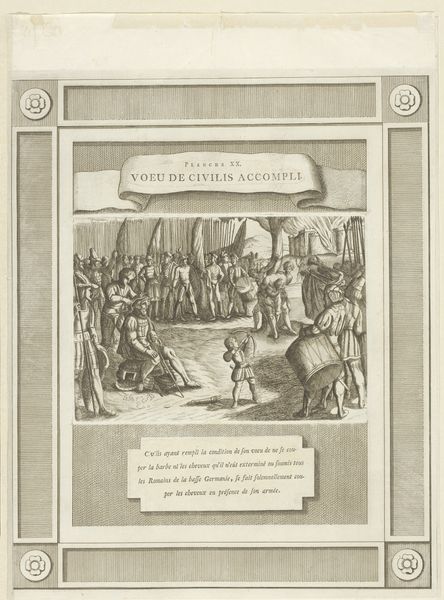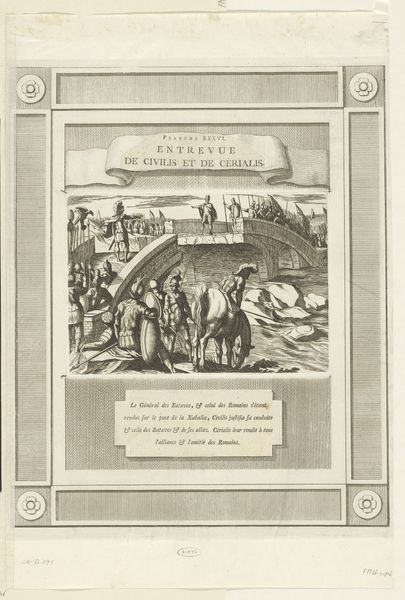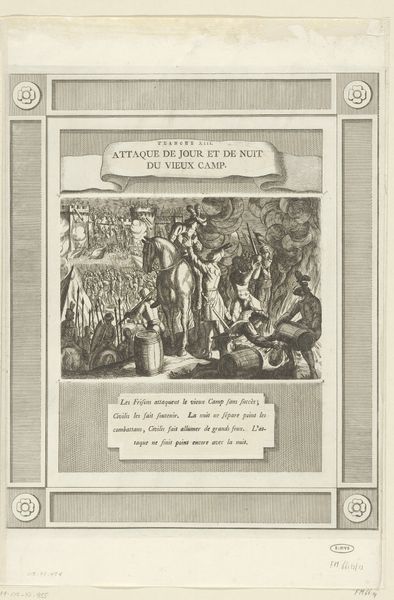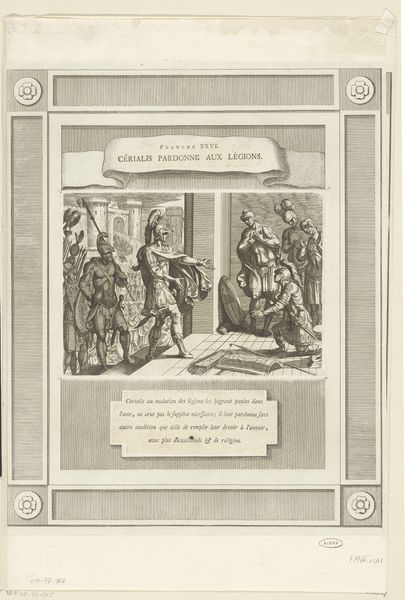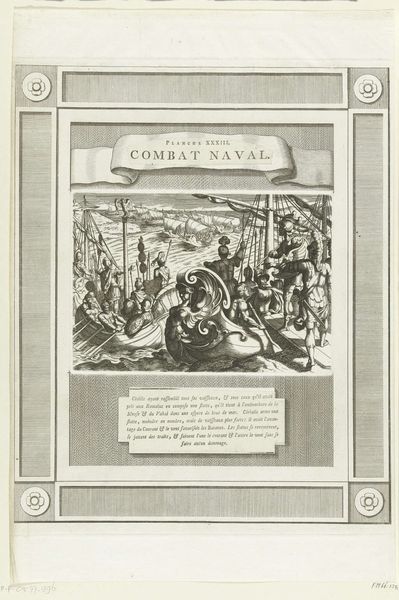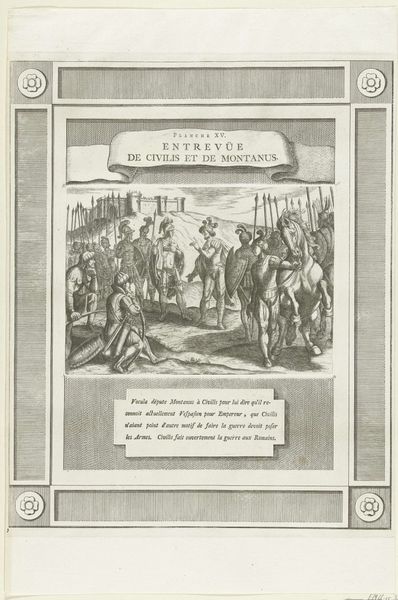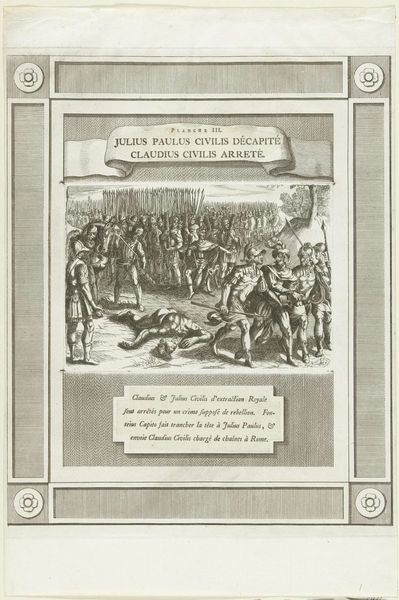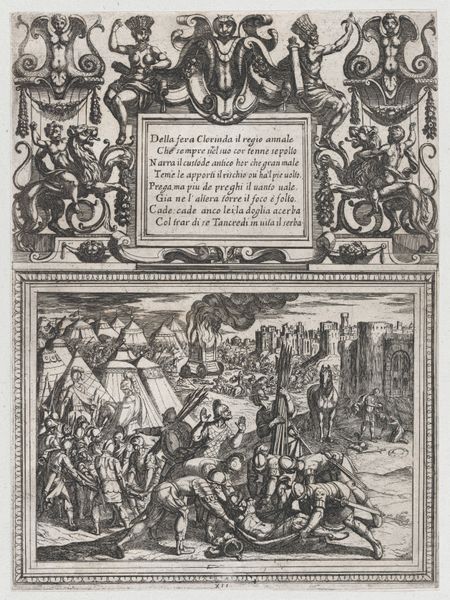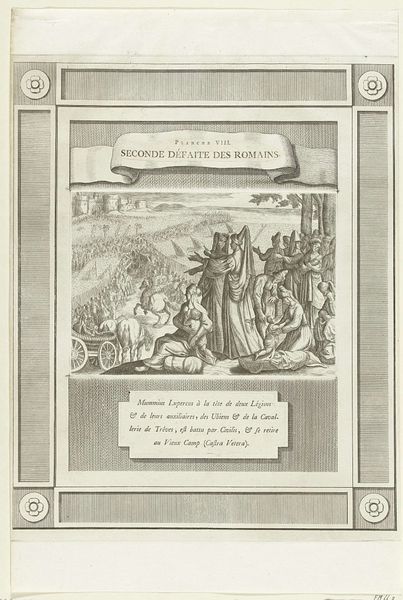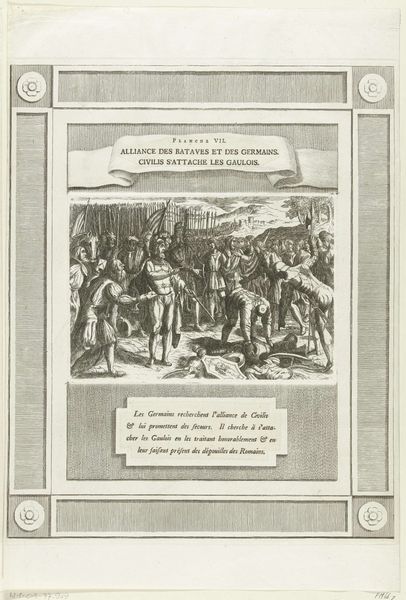
Dimensions: height 140 mm, width 202 mm, height 370 mm, width 300 mm
Copyright: Rijks Museum: Open Domain
Curator: Well, isn’t this lively! An epic scene teeming with figures…almost overwhelming. It feels very charged, wouldn't you say? Like a brewing storm about to break. Editor: Absolutely. This print, dating back to between 1768 and 1770, depicts "Troepen van Civilis steken de Maas over, 69-70"—"Troops of Civilis Crossing the Meuse, 69-70." It's currently held at the Rijksmuseum. We’re seeing an anonymous engraving capturing a pivotal moment in history. And yes, there is something undeniably potent in its composition. Curator: Anonymous, you say? That's rather mysterious for such a… bombastic image. The sheer density of bodies pressing forward…almost no breathing room. It really emphasizes a collective energy, almost erasing individuality. Editor: Exactly. The artist likely wanted to emphasize the broader historical and political dynamics, a classic technique when representing wars or mass movements. Collective actions, the role of leadership… that sort of thing. Considering that it’s based on historical accounts of the Batavian rebellion against Rome, these figures act as a reminder of popular resistance to empire. It speaks to themes of invasion, conflict, and perhaps even a touch of heroism, depending on where you stand. Curator: Aah, heroism... maybe for the folks on horseback! I see those central figures, confidently astride their mounts as chaos ensues all around…are we supposed to admire them in their commanding perspective? It feels staged, in a way. Like historical theatre. Editor: And isn’t history always a theatre, curated for specific audiences and agendas? The Baroque style lends itself to such drama—bold movement, stark contrasts in light and shadow—to amplify the emotional weight of the scene. Curator: The architecture in the background… that bridge barely standing under all that weight. The print is definitely skillfully rendered but has this removed quality to it, a bit dry almost. All that detail doesn’t particularly stir emotion. Editor: Perhaps it is the intent to inspire analysis, not visceral emotion. To me, it becomes a point of reflection. And in representing collective violence through an aesthetic lens, "Troepen van Civilis steken de Maas over, 69-70," offers an interesting window into how historical narratives get constructed. Curator: A somber reflection to end our musings… indeed. Maybe those chaotic scenes are but stylized reminders that our readings will also likely evolve. Editor: Exactly! And in that dialogue, perhaps we find meaning after all.
Comments
No comments
Be the first to comment and join the conversation on the ultimate creative platform.

